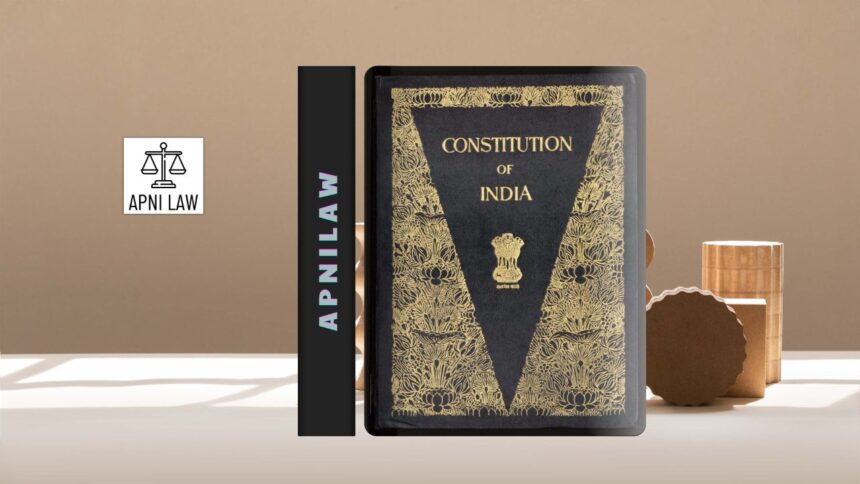Introduction
The evolution of states and union territories in India reflects the nation’s political diversity and cultural complexity. When India gained independence in 1947, it inherited a fragmented political landscape comprising British provinces and princely states. The process of uniting these regions into a single federation was neither easy nor quick. It required visionary leadership, careful planning, and bold constitutional decisions.
From the early integration under Sardar Vallabhbhai Patel to the linguistic reorganization in 1956, and later the creation of new states to meet regional aspirations, the journey has been remarkable. This evolution shows how India maintained unity while respecting diversity. The Indian Constitution provided a flexible federal structure that allowed changes in boundaries and creation of new states when necessary. Today, India consists of 28 states and 8 union territories, a structure shaped by decades of adjustments and reforms.
The Beginning: Integration of Princely States (1947–1950)
When the British left India, the country had over 550 princely states in addition to the British provinces. These princely states were not under direct British rule but enjoyed autonomy under the suzerainty of the Crown. After independence, the challenge was to integrate these states into a unified Indian nation.
Sardar Vallabhbhai Patel and V.P. Menon led this massive integration effort. They persuaded rulers of princely states to sign the Instrument of Accession, bringing them into the Indian Union. Through a combination of diplomacy and firmness, almost all princely states joined India. States like Hyderabad, Junagadh, and Kashmir presented unique challenges, but the government resolved them through political negotiation and, in some cases, military action.
By 1950, the first schedule of the Constitution listed states in four categories: Part A (former British provinces), Part B (princely states), Part C (chief commissioners’ provinces), and Part D (Andaman and Nicobar Islands). This arrangement, however, was temporary and needed a more systematic reorganization.
The Linguistic Reorganization: States Reorganisation Act, 1956
The demand for linguistic states emerged soon after independence. People felt a strong emotional connection to their language and culture, which created pressure for states to be formed on linguistic lines. The turning point came in 1953 when Andhra Pradesh was created after Potti Sriramulu’s hunger strike demanding a separate Telugu-speaking state.
This incident forced the government to set up the States Reorganisation Commission under Fazal Ali. The Commission recommended reorganizing states primarily on linguistic lines, while considering administrative convenience. Based on these recommendations, the States Reorganisation Act, 1956 came into effect.
This Act abolished the old classification of states and created 14 states and 6 union territories. It redrew boundaries, merged small regions, and gave India a more rational structure. For example, the Telugu-speaking areas of Madras were separated to form Andhra Pradesh, and Kerala was created for Malayalam speakers.
Emergence of Union Territories
The Constitution also provided for union territories, which are regions administered directly by the central government. These territories were created for various reasons, some were too small to become full-fledged states, while others had strategic importance or diverse populations.
Initially, there were six union territories, including Delhi, Himachal Pradesh, and the Andaman and Nicobar Islands. Over time, some union territories like Himachal Pradesh, Goa, and Arunachal Pradesh became states. Today, India has eight union territories, including Delhi and Puducherry, which enjoy partial statehood.
Union territories allowed the central government to maintain direct control over areas where full statehood was either not practical or not in national interest. This system continues to function as a balancing tool between federalism and administrative efficiency.
Creation of New States After 1956
Even after the 1956 reorganization, demands for new states did not stop. People in different regions sought separate states to preserve their culture or ensure better governance. These movements shaped India’s political map over the decades.
In 1960, Bombay State was divided into Maharashtra and Gujarat following linguistic protests. In 1966, Punjab was reorganized, creating Haryana and Himachal Pradesh and transferring some territories to Chandigarh, which became a union territory and shared capital.
The North-Eastern region also saw major changes. Nagaland became a state in 1963, Meghalaya in 1972, and later Mizoram and Arunachal Pradesh in 1987. These steps ensured better governance in culturally distinct and geographically isolated areas.
In 2000, India witnessed the creation of three new states: Uttarakhand (then Uttaranchal) carved from Uttar Pradesh, Jharkhand from Bihar, and Chhattisgarh from Madhya Pradesh. These changes were driven by demands for development and representation of tribal communities.
Most recently, in 2014, Telangana became India’s 29th state after being separated from Andhra Pradesh. This division reflected regional aspirations and the need for focused development.
Union Territories in the 21st Century
The concept of union territories continued to evolve. In 2019, Jammu and Kashmir, which earlier enjoyed special status under Article 370, was reorganized into two union territories: Jammu & Kashmir and Ladakh. This marked a historic change in India’s federal structure.
Similarly, Daman and Diu merged with Dadra and Nagar Haveli in 2020 to form a single union territory for administrative convenience. These changes show that the Constitution allows flexibility in reorganizing territories to meet political and administrative needs.
Role of the Constitution in Reorganization
The Indian Constitution makes territorial changes possible under Article 3, which empowers Parliament to create new states, alter boundaries, or change names. However, Parliament must seek the opinion of the concerned state legislature before making such changes. This balance ensures both federal consultation and national interest.
The flexibility of Article 3 has enabled India to respond to regional aspirations without compromising unity. This feature is unique because many other federations have rigid boundaries that cannot change easily.
Why Does This Evolution Matter?
The historical journey of states and union territories reflects India’s commitment to democracy and diversity. Each reorganization addressed regional aspirations, linguistic identity, or administrative efficiency while maintaining the nation’s integrity. This adaptability is a strength that allowed India to avoid fragmentation despite its vast diversity.
At the same time, constant demands for new states raise questions about governance and economic viability. While smaller states can ensure focused development, too many divisions may strain resources. Thus, the debate on state reorganization remains relevant even today.
Conclusion
The evolution of states and union territories in India is a story of negotiation, adaptation, and resilience. From the integration of princely states to the recent creation of Telangana and reorganization of Jammu & Kashmir, every change reflects India’s ability to balance unity with diversity.
This journey proves that the Indian Constitution is not rigid but a living document that adjusts to the nation’s needs. The process of state formation and union territory management has kept India united while accommodating cultural and linguistic diversity. It remains an ongoing exercise in federalism, ensuring that governance stays close to the people while protecting the integrity of the nation.
For any specific query call at +91 – 8569843472







